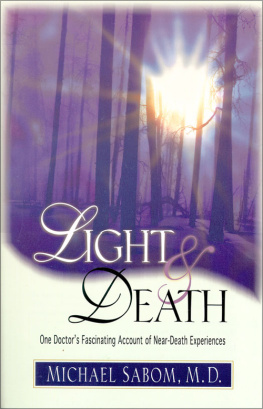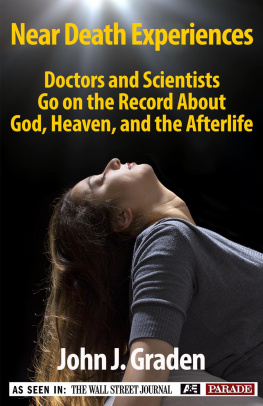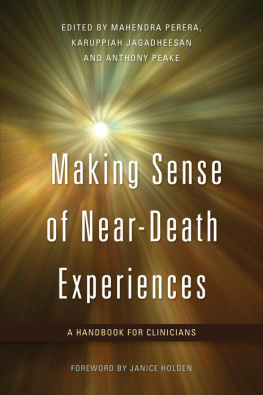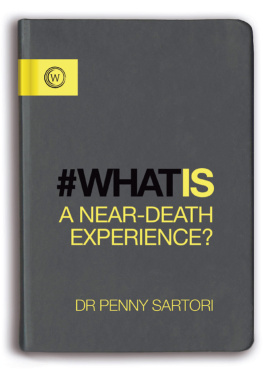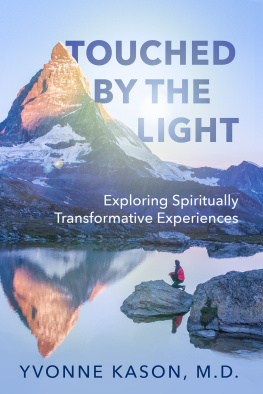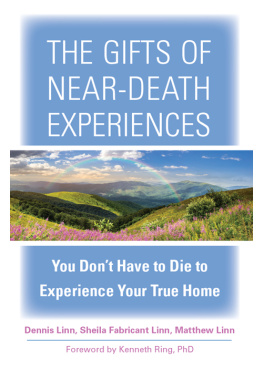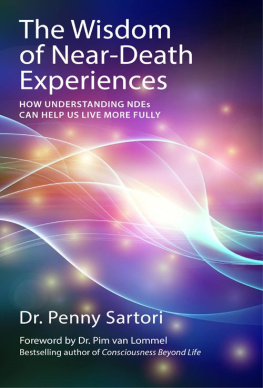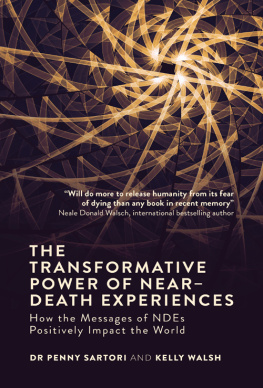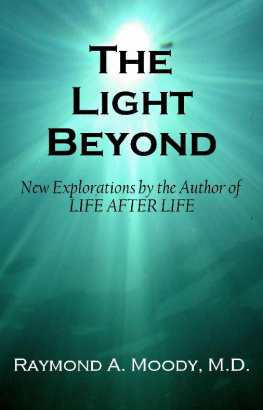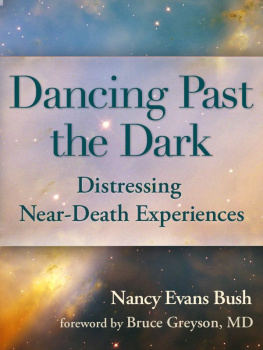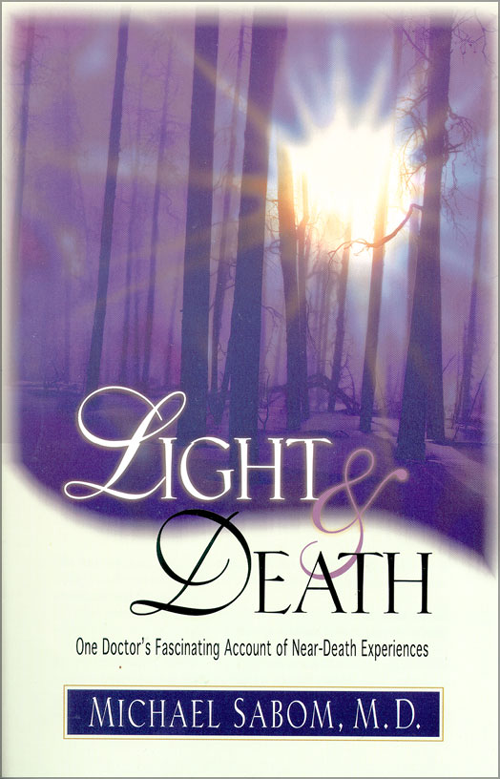L IGHT
&
D EATH
One Doctors Fascinating Account of Near-Death Experiences
M ICHAEL S ABOM M.D.

To Diane and Shay,
two lights in my life
Contents
I t has been over fifteen years since I completed my first study of near-death experiences and wrote Recollections of Death. During this time, I have been immersed in the day-to-day demands of a busy medical practice and able, for the most part, to follow from the sidelines the debates and controversies which have grown up around this intriguing phenomenon. Four years ago, I reentered the field of NDE research to conduct The Atlanta Study, which extends my original findings in three directionsscientifically, by exploring the nature of the near-death experience as a spiritual and physical event and considering its relationship to the moment of death; medically, by examining its clinical effect on survival and healing; and theologically, by considering this experience in light of traditional Christian teaching.
The names in this book of the patients, doctors, and nurses in The Atlanta Study are fictitious except for Darrell Pell, Alison Pell, and Dr. Robert Spetzler. The medical details, however, are accurate, and the testimonies have been meticulously reconstructed from tape-recorded interviews. Whereas I bring my own faith into the book, I do not assume the reader shares in this faith.
The completion of this research and the writing of this book was a team effort. One hundred and sixty persons graciously consented to be interviewed and evaluated, with Pam Reynolds and Darrell Pell deserving special credit in this regard.
Stephen M. Miller assisted in organizing the structure of the book, in interviewing subjects in one of the stories, and in writing some of the material.
Calvin Edwards, president of MainStreamConsulting in Atlanta, provided invaluable advice and direction. He is not only my agent, but also a close friend, a Christian brother, and a contributor to key sections of the book.
Drs. John Musselman, Quigg Lawrence, and John Gibbs critically read and improved the manuscript.
Dr. Robert Spetzler generously assisted by ensuring that my reconstruction of his surgical procedure on Pam Reynolds was accurate.
My editors, Lyn Cryderman and Rachel Boers, warmly welcomed me into the Zondervan family and patiently polished the pages which follow.
Members of East Cobb Presbyterian Church in Atlanta supported me throughout this process with prayer and encouragement. Pastors Dr. Rick Holmes and Stephen Jackson led me with wisdom through difficult theological concepts. Elders on the Session offered valuable critique. And my Home Fellowship Community prayed on a weekly basis for the Lords guidance in this work. They include: Diane, Dianna, Hugh, Barb, Joe, Karen, Reg, Barbie, Judy, Bob, Ken H., Becky, Barbara, Jack, Adie, Chuck, Wendy, and Ken M.
My wife, Diane, has been my major source of ideas, editorial assistance, and encouragement. Without her love and steady reassurance this project would never have been completed.
Finally, the Head of the team, the Lord Jesus Christ, is my staff and my comforter. To him be all honor and glory.
DR. R. C. S PROUL
P ROFESSOR OF S YSTEMATIC T HEOLOGY
R EFORMED T HEOLOGICAL S EMINARY
THE ATLANTA STUDY:
A Second Look at the Near-Death Experience
P ete Morton, a 53-year-old Air Force veteran, climbed into the military-issue hospital chair the way a cowboy mounts a horse. Pete was a handsome, rugged-looking man with black hair, sun-browned skin, and a deep, raspy voice tinged with a Louisiana bayou drawl. He didnt look like a man in frail health. But he was. Sitting backward in the gray steel chair, he leaned his chest against the vinyl-padded backrest and lit up a cigarette. I still chuckle when I listen to the tape of my interview with him; you can hear him strike the match. I was his cardiologist. The year was 1977.
Pete had suffered two cardiac arrests several years earlier, and was resuscitated each time. Now he was complaining of chest pain. His physician had referred him to the Veterans Administration hospital in Gainesville, Florida, for a heart catheterizationa procedure during which I would insert a nearly four-foot-long tube into one of his arteries and gently thread this tube through the artery into his heart. By using a dye injected through this tube, I would be able to clearly see in an X-ray video any heart damage or blockages that might be causing his pain.
Before I did the procedure, I needed to talk with Pete about his medical history. At the time, I was already a year into my research on near-death experiences (NDEs) in which I was asking resuscitated patients if they could remember anything unusual about their crisis.
When I asked Pete, the room fell silent. The only movement was a spiraling pillar of cigarette smoke rising and dispersing near the ceiling. Pete looked at the doorway behind me, Im guessing to make sure no one else was around. As he finally began to speak, it was with embarrassing stammers. Clearly, I had caught him off guard. I was asking to hear about something he had told only to his wife, and, even to her, only in part. Once she had heard what little he was willing to say, she refused to let him speak of it again in her presence.
I assured Pete that he could talk freely with me and that I wouldnt think him crazy. I explained that I was researching the topic. He told me he had left his body during his first cardiac arrest and had watched the resuscitation. When I asked him to tell me what exactly he saw, he described the resuscitation with such detail and accuracy that I could have later used the tape to teach physicians.
Pete remembered seeing a doctors first attempt to restore his heartbeat. He struck me. And I mean he really whacked me. He came back with his fist from way behind his head and he hit me right in the center of my chest. Pete remembered them inserting a needle into his chest in a procedure that he said looked like one of those Aztec Indian rituals where they take the virgins heart out. He even remembered thinking that when they shocked him they gave him too much voltage. Man, my body jumped about two feet off the table.
Before talking with Pete, and scores like him, I didnt believe there was such a thing as a near-death experience. I first heard of the near-death experience as I sat with 20 other people in the Seekers Sunday school class at Trinity United Methodist Church in Gainesville, Florida. Sarah Kreutziger, a psychiatric social worker, was giving a report on Raymond Moodys book Life After Life, a collection of stories about people who said they nearly died and who claimed to have seen the spiritual world. Some of these people said they had left their bodies and watched as doctors tried to save them.
In our classroom there was just one physicianme. Somebody asked what I thought.
I dont believe it, I said.
That was my first public comment on near-death experiences.
As a doctor, I had witnessed and performed countless resuscitations. But never, ever, had a patient told me a story as bizarre as the stories Moody reported. And never had any of my colleagues spun such a yarn. I truly believed Raymond Moody was pulling a fast one.
Still, the Seekers class was so intrigued by his book, which seemed to reinforce belief in life after death, that they arranged for Sarah to present a report to all the adults in the church. Sarah asked me to serve as medical consultant for the session and to field any medical questions. I agreed reluctantly; I was convinced the topic was better suited to a barker outside a carnival sideshow.

